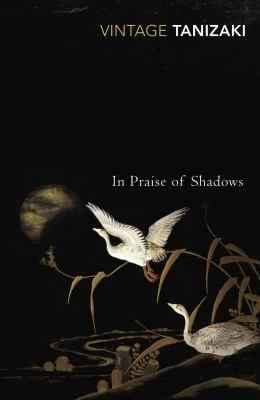8.2 /10 1 Votes8.2
Original title 陰翳礼讃 (In'ei Raisan) Publication date 1933 Published in english 1977 | 4.1/5 Goodreads Published in English 1977 Originally published 1933 Page count 73 Country Japan | |||||||||||||||||||||||||||||||||
 | ||||||||||||||||||||||||||||||||||
Translator Thomas J. Harper and Edward G. Seidensticker Similar Jun'ichirō Tanizaki books, Philosophy books | ||||||||||||||||||||||||||||||||||
Calligraphy in praise of shadows
In Praise of Shadows (陰翳礼讃, In'ei Raisan) is an essay on Japanese aesthetics by the Japanese author and novelist Jun'ichirō Tanizaki. It was translated into English by the academic students of Japanese literature, Thomas Harper and Edward Seidensticker.
Contents
- Calligraphy in praise of shadows
- Fueki textiles in praise of shadows
- Publication
- Themes
- Featured individuals
- Reception
- References
Fueki textiles in praise of shadows
Publication
Already sketched out in a series of comments that appear in Some Prefer Nettles, Tanizaki's aesthetic credo, in the more finished form of this essay, was originally published in 1933 in Japanese. The English translation was published in 1977 by Leete's Island Books.
The translation contains a foreword by architect and educator Charles Moore and an afterword by one of the translators, Thomas J. Harper. Harper was Senior Lecturer in Japanese Literature at the Australian National University in Canberra. The other translator, Edward Seidensticker, was Professor of Japanese Literature at Columbia University.
Much shorter than the author's novels, this book is a small meditative work of 73 pages, of which 59 are the essay itself.
Themes
The essay consists of 16 sections that discuss traditional Japanese aesthetics in contrast with change. Comparisons of light with darkness are used to contrast Western and Asian cultures. The West, in its striving for progress, is presented as continuously searching for light and clarity, while the subtle and subdued forms of oriental art and literature are seen by Tanizaki to represent an appreciation of shadow and subtlety, closely relating to the traditional Japanese concept of sabi. In addition to contrasting light and dark, Tanizaki further considers the layered tones of various kinds of shadows and their power to reflect low sheen materials like gold embroidery, patina and cloudy crystals. In addition, he distinguishes between the values of gleam and shine.
The text presents personal reflections on topics as diverse as architecture and its fittings, crafts, finishes, jade, food, cosmetics and mono no aware (the art of impermanence). Tanizaki explores in close description the use of space in buildings, lacquerware by candlelight, monastery toilets and women in the dark of a brothel. The essay acts as "a classic description of the collision between the shadows of traditional Japanese interiors and the dazzling light of the modern age."
Featured individuals
Among the historic and contemporary individuals mentioned in the essay are:
Reception
The work has been praised for its insight and relevance into issues of modernity and culture, and Tanizaki has been called an "ecological prophet." A. C. Grayling has described Tanizaki's essay on Japanese taste as a "hymn to nuance" and an exercise in mindfulness.
Junichiro Tanizaki selects for praise all things delicate and nuanced, everything softened by shadows and the patina of age, anything understated and natural—as for example the patterns of grain in old wood, the sound of rain dripping from eaves and leaves, or washing over the footing of a stone lantern in a garden, and refreshing the moss that grows about it – and by doing so he suggests an attitude of appreciation and mindfulness, especially mindfulness of beauty, as central to life lived well.
In the spirit of Tanizaki juxtaposing the cultures of east and west, Grayling notes a link to a similar approach and emphasis in the British writer Walter Pater whose late Renaissance essay he quotes, "The service of speculative culture towards the human spirit is to rouse, to startle it to a life of constant and eager observation". Grayling concludes that the difference between the two essayists lies in the "tranquility" of Tanizaki and the "intensity" of Pater.
In 2001, Random House published a reprint in paperback.
